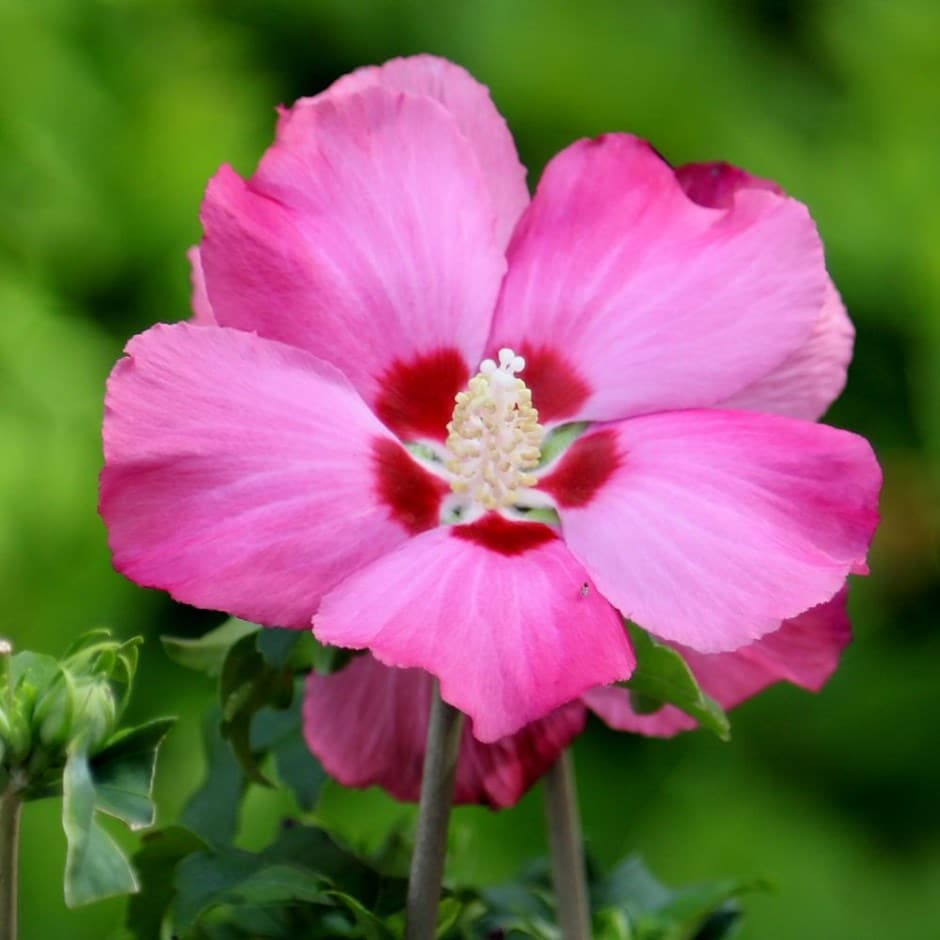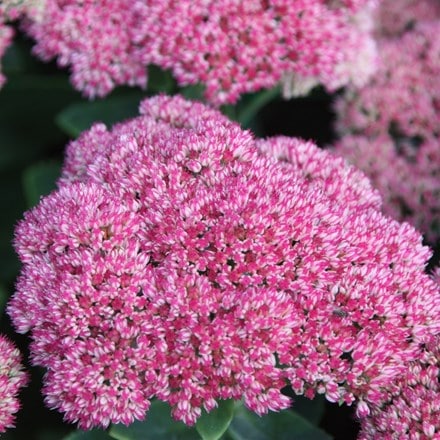Hibiscus syriacus 'Woodbridge'
tree hollyhock
- 2 litre pot
- £23.99 £29.99
- In stock (shipped within 2-3 working days)
- 12 litre pot | 60 - 80cm tall
- £89.99
- In stock (shipped within 2-3 working days)
Delivery options
- Standard £5.99
- Position: full sun
- Soil: humus-rich, moist but well-drained, neutral to slightly alkaline soil
- Rate of growth: average to fast
- Flowering period: August to October
- Hardiness: fully hardy
A late flowering shrub that comes into its own when others are looking tired, Hibiscus syriacus 'Woodbridge' produces its large (up to 8cm or 3in across), red centred pink flowers from late summer to mid-autumn.
This deciduous shrub has an exotic feel to it, but is as much at home in a herbaceous border as it is in a tropical-style garden. It is best planted in a sunny spot as it does need a long, hot summer to flower well
The leaves are pretty too, three lobed, dark green and very distinctive, but please keep in mind, that the newly emerging foliage won't appear until late spring each year.
This deciduous shrub has an exotic feel to it, but is as much at home in a herbaceous border as it is in a tropical-style garden. It is best planted in a sunny spot as it does need a long, hot summer to flower well
The leaves are pretty too, three lobed, dark green and very distinctive, but please keep in mind, that the newly emerging foliage won't appear until late spring each year.
Plant in a sheltered, sunny location with moist, fertile soil. While they can tolerate some dryness, consistent moisture will encourage lush growth and abundant blooms.
If growing them in large containers, protect the roots from harsh winter conditions by wrapping pots and plants using horticultural fleece or move to a sheltered spot such as a southerly facing wall.
Mulch the base of border plants with a dry material like bark chips to insulate the roots and prevent frost damage. Regularly remove spent blooms to prolong flowering.
Pruning should be done in late winter or early spring, before new growth emerges. Prune back to strong, healthy buds to encourage new growth and shape the plant. Removing old and damaged wood will also help to improve air circulation and reduce the risk of disease.
If growing them in large containers, protect the roots from harsh winter conditions by wrapping pots and plants using horticultural fleece or move to a sheltered spot such as a southerly facing wall.
Mulch the base of border plants with a dry material like bark chips to insulate the roots and prevent frost damage. Regularly remove spent blooms to prolong flowering.
Pruning should be done in late winter or early spring, before new growth emerges. Prune back to strong, healthy buds to encourage new growth and shape the plant. Removing old and damaged wood will also help to improve air circulation and reduce the risk of disease.

